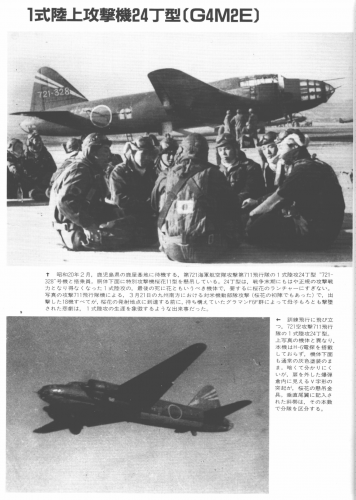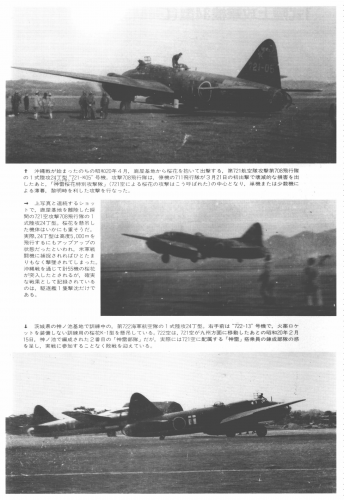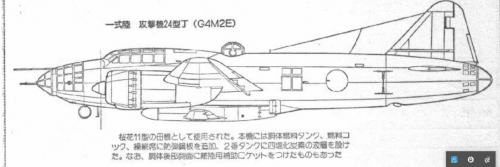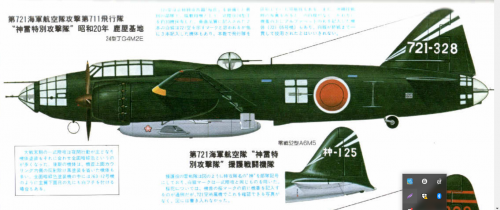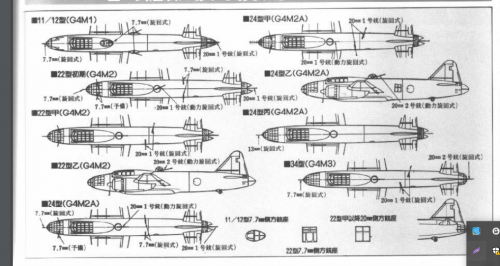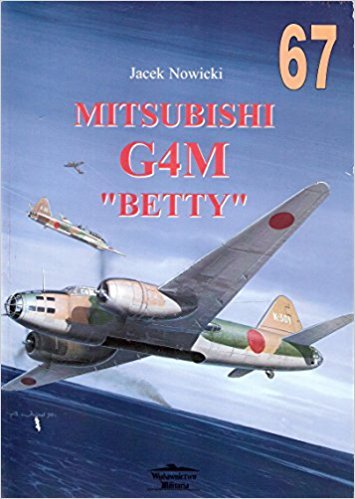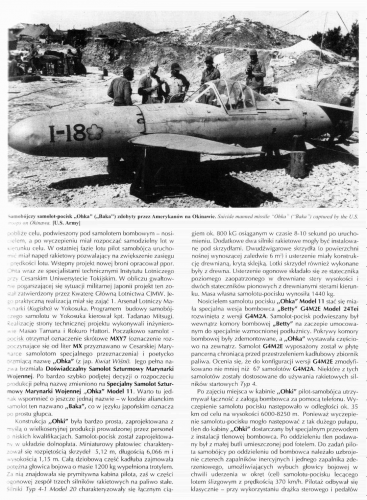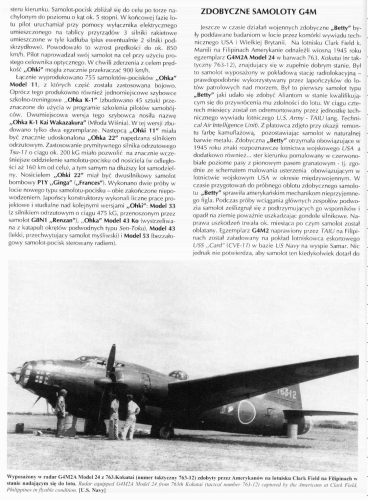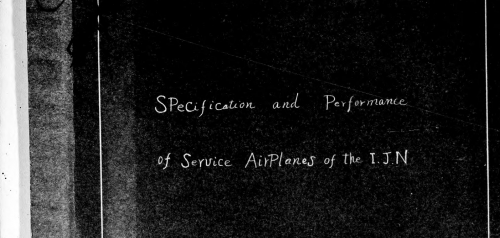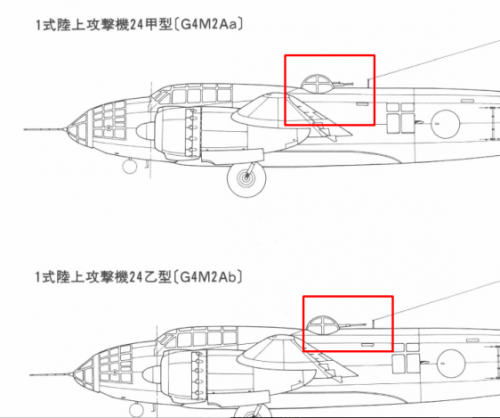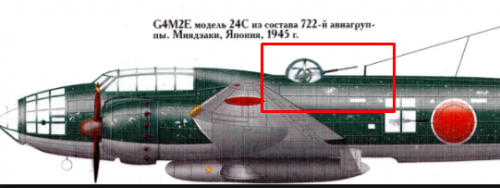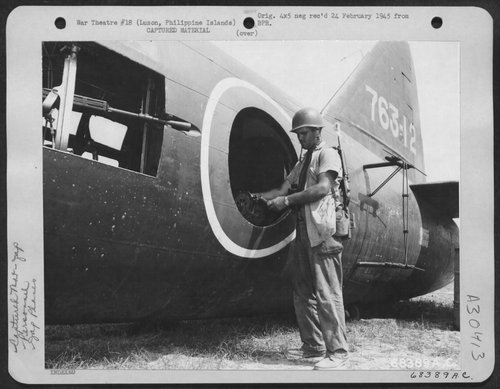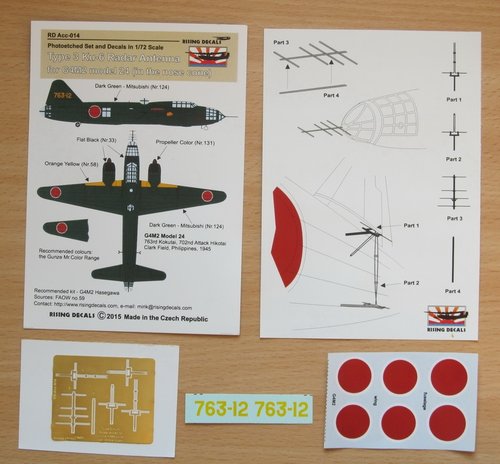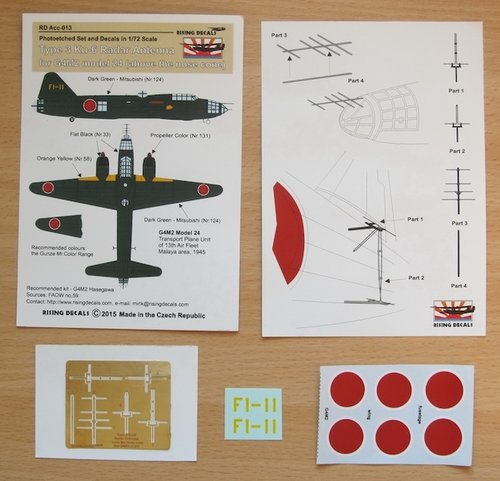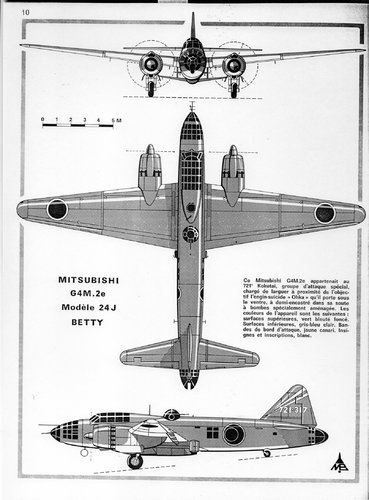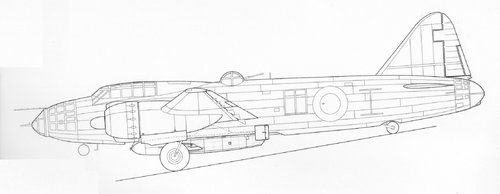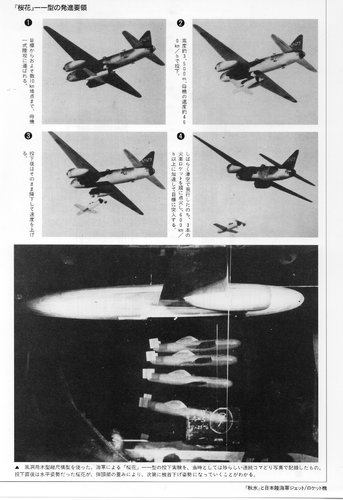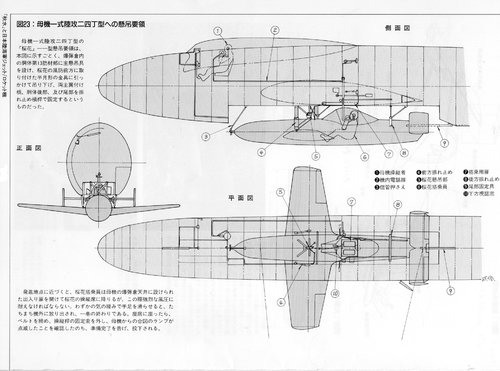The operational procedures established that the Ohka should be launched from between 16 and 37 km of distance to the target and at between 6,000 and 8,200 m of altitude. Following its flying profile, the Mitsubishi G4M2e Model 24J bombers that carried them were usually detected by the radars of the Allies from a distance of 130 km. Once detected, the fighters on CAP missions over the fleet could intercept the Bettys 111 km from the target. The powerful anti-aircraft defence deployed by the Allies warships in 1945 made almost impossible that a conventional bomber could fly with impunity over one of its Task Groups.
During its first combat on March 21, 1945 the 18 Bettys of the 721st Kokutai were shot down by Hellcat fighters when they were more than 90 km to the target. All Ohka units fell to the sea, without their pilots, well before the launch point. The Betty could just fly at 240 kph if loaded with an Ohka of 2,140 kg. Its only surviving possibility was reaching the launch point by surprise.
In the Okinawa Area, 69 Bettys escorted by 150 Zeros made ten attacks against the invasion fleet between March 21 and June 22, 1945. They launched 66 Ohkas of the Jinrai Corps (Oka Special Attack Group), sank the DD-733 Mannert L. Abele destroyer and damaged the BB-48
West Virginia battleship, the DD-478 Stanly and DD-774 Hugh W. Hadley destroyers, the DM-30 Shea minelayer, the DMS-27 Jeffers minesweeper, the APA-47 Alpine Attack Transport and the YMS-327 light minesweeper.
Previous to launch, the Betty initiated a shallow dive until reaching the take off speed of between 280 and 325 kph. The Ohka flight began as a shallow, unpowered dive, on a 5º 35’ gliding angle, reaching a cruise speed of between 370 and 450 kph. Some of the machines of the Model 11 last series carried a couple of Toku-Ro.1 Type 1 rockets under the wing roots that generated 300 kg of thrust during 10 seconds with the purpose of increasing its speed and range.
At a distance of between 3,000 and 8,000 m from the target, the pilot pressed the button on the top of the control stick to start the electric ignition of the three Toku-Ro.1 Type 2 rockets at the rear section of the fuselage. Each rocket had a length of 179 cm and a diameter of 25 cm, weighted 115 kg and contained 44 kg of solid fuel capable of generating 600 kg of thrust during 30 seconds. After the ignition, the pilot initiated the final 50º dive on the target reaching a terminal speed of 933 kph.
The Ohka could not be intercepted by the fighters at this stage and its course could only be altered by a direct impact from the heavy AA, due to the inertial momentum of the heavy warhead. Not even the pilot could alter its course as the pressure exercised by the air on the tail surfaces in transonic flight was superior to any muscular work applied to the flight controls.
The warhead had been designed for the destruction of major warships. It had a hardened steel warhead to pierce any armour deck and contained 512 kg of Trinitroanisol explosive. It had a length of 180.6 cm (without the nose priming plug) and a diameter of 60 cm and a weight of 1267 kg, including the three rear bolts. It had a wind air-armed fuse in the nosecone that automatically unblocked itself when the Ohka was released by the launch airplane. There were also four impact fuses at the rear of the warhead, activated by means of a T-handle located to the front right of the cockpit. The pilot carried a parachute for those cases when the bomb fell to the sea before reaching the target. The communication with the launch airplane was made by lights on the instrument panel and a one-way Gosport system of rubber tubing.



